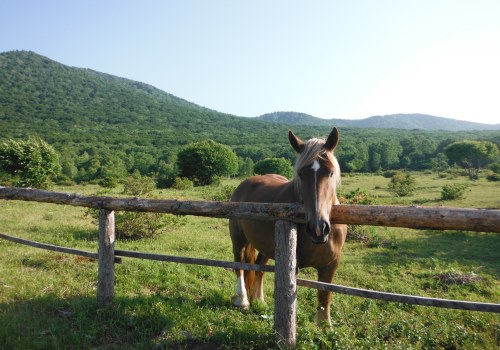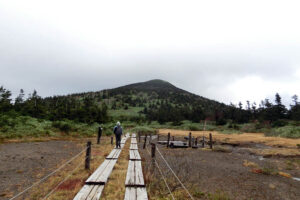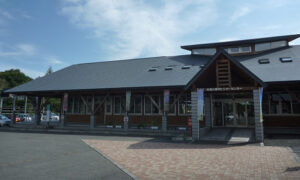The Grassy Meadows and Woodlands

The grassy meadows and woodlands of the Appi highlands (Appi Kogen) welcome visitors with easy treks for relaxed walking and enjoyment of the views. Well-marked routes lead through a mesmerizing beech forest on a path that has been named one of the 100 best trails in Japan, and across plateaus where horses graze and wildflowers bloom. Each spring the meadows are awash in orange azaleas, white crabapple trees, and lily-of-the valley. Summer brings splashes of purple in fireweed and irises; autumn, still more purples and blues in native gentian plants, monkshood, and lobelia.
The beeches that thrive in the adjacent woodlands today are the offspring of trees harvested 80 years ago for use in charcoal manufacture and wood bases for lacquerware, the latter a local craft that continues today. Not much gear or even previous experience is needed for a comfortable two- to three-hour walk past ponds and a waterfall. More serious hikers, take note: the Appi highlands of Hachimantai are part of the famous 50-kilometer trail linking this area with Mount Iwate.
This area of northern Iwate Prefecture did not always appear as it does today. More than a thousand years ago the rolling foothills of Appi were covered with forest. In 915, much of that terrain was scorched by fire in the aftermath of volcanic eruptions. Over subsequent centuries the recovering earth was cultivated for farming and its grassy hills put to use as pastureland for workhorses. During the fifteenth and sixteenth centuries, when many areas of Japan were locked in civil war, Kandachi draft horses bred here were used for battlefront needs.

Among the horses that can now be seen grazing in this bucolic setting are the descendants of steeds that witnessed historic samurai-era combat. Also here is the smaller Kiso horse, a native breed that is critically endangered.
After World War II cattle were introduced to the Appi highlands. Eventually, though, inexpensive imports slashed demand for locally grown beef, and engine-powered farm machinery replaced the workhorses. With livestock no longer grazing the hills, the plant life began to shift again. Scrub trees, broadleaf bamboo, and other woody plants began to take over the grassy meadows. Where there had been more than 80 hectares of open grassland in 1976, two decades later in 1997 the area was reduced by nearly half, to 44 hectares.
Municipal authorities, together with the Forestry Agency, began to study sustainable ways of bringing the meadows back in 2006. Today those efforts, backed by local businesses and volunteers, have reintroduced native horses to these meadows and established some 180 hectares of both wooded land and open meadows that are available for everyone to enjoy. One course for novice hikers begins at the Appi Unkai gondola station just beneath the summit of Mount Maemori (1,304 meters) and continues on to Mount Nishimori (1,328 meters) and onward to the Naka no Makiba meadow. A rich roster of nature programs for learning about local forest ecology, living in balance, and enjoying the great outdoors has been developed for visitors to the Hachimantai area, and school excursions are welcomed.


Find out more at the Matsuo Hachimantai Vistors’ Center near the grasslands of Appi Kogen can be visited online at hachimantai.or.jp/visitor_center.
The Appi Kogen at appi-japan.com, and the Hachimantai area at hachimantai.or.jp
Model courses along the 50-kilometer trail linking Mount Iwate, Hachimantai, and Appi Kogen are published at env.go.jp/park/towada/hachimantai/course/course_008.
Information on the local craft of Appi-nuri lacquerware can be found at appiurushistudio.com.
See visitiwate.com for information on things to do throughout Iwate Prefecture.

